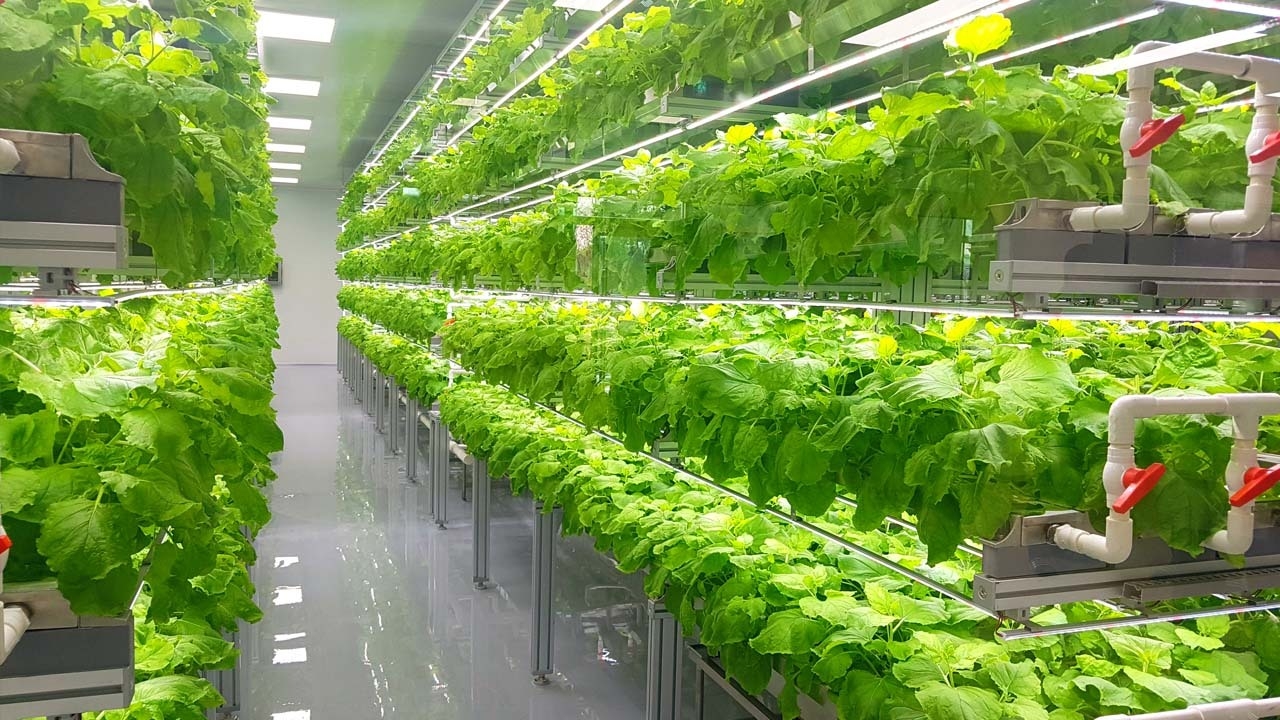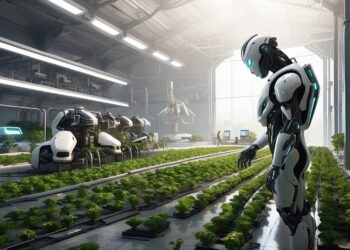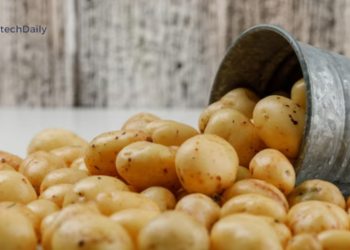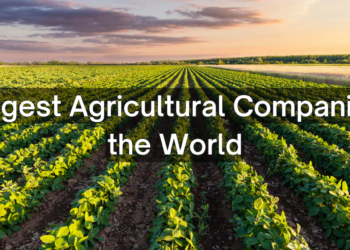The world’s population is projected to reach 9.7 billion by 2050, and feeding this growing population will be one of the greatest challenges of the 21st century. To meet this demand, the agriculture sector must evolve and embrace new technologies to increase efficiency, improve yields, and reduce the environmental impact of farming.
One such technology is smart greenhouses and controlled environment agriculture (CEA), which offer a more sustainable and efficient way to grow crops. In smart greenhouses, growers use technology to monitor and control the growing environment, including temperature, humidity, light, and water, in order to optimize crop growth and quality.
Smart greenhouses
Smart greenhouses are specialized growing environments that use technology to monitor and control the growing conditions for crops. The main goal of smart greenhouses is to optimize the environment in order to increase yields and improve crop quality, while also reducing waste and improving sustainability.

In a smart greenhouse, growers use technology such as sensors, climate control systems, and artificial lighting to create optimal growing conditions for their crops. For example, they can control temperature, humidity, light, and water to create a more consistent and predictable environment for the plants.
One of the key benefits of greenhouses is that they can provide a more secure and stable food supply. By controlling the growing environment, growers can produce crops year-round, regardless of weather conditions, and ensure that the crops receive the necessary nutrients and environmental conditions for optimal growth.
Smart greenhouses also offer a more sustainable way to grow crops. By reducing the use of water, fertilizer, and pesticides, and optimizing resource use, smart greenhouses can help to reduce waste and improve efficiency. This results in a smaller environmental footprint and a more economically sustainable growing operation.
Despite these benefits, greenhouses also present some challenges. The high cost of building and operating smart greenhouses is a significant barrier for many growers, and there is a need for trained workers who can operate and maintain the technology. Additionally, there is a need for regulations and standards to ensure that smart greenhouses are operated in a safe and sustainable manner.
The Benefits of Smart Greenhouses and CEA
One of the key benefits of greenhouses and CEA is that they can provide a more controlled and consistent growing environment, which leads to higher yields and improved crop quality. By controlling temperature, humidity, light, and water, growers can create optimal growing conditions for their crops, which can result in higher yields and higher-quality produce.
Smart greenhouses and CEA also offer a more sustainable way to grow crops, as they can reduce the use of water, fertilizer, and pesticides. By monitoring and controlling the growing environment, growers can optimize resource use, reducing waste and improving efficiency.
In addition, greenhouses and CEA can provide a more secure and stable food supply, as they allow growers to produce crops year-round, regardless of weather conditions. This can be particularly important in regions where weather extremes, such as droughts or extreme heat, can impact crop yields.
Smart greenhouses and CEA can also provide a more economically sustainable way to grow crops, as they can reduce costs and increase profits for growers. By optimizing resource use and reducing waste, smart greenhouses can lower the cost of production, while also providing a more consistent and reliable source of high-quality produce.
The Challenges of Smart Greenhouses and CEA
While smart greenhouses and CEA offer many benefits, they also present some challenges that must be addressed. One of the biggest challenges is the high cost of building and operating smart greenhouses. The technology and infrastructure required to create and maintain a controlled environment can be expensive, making it a significant investment for growers.
In addition, the lack of skilled workers trained in the use and maintenance of greenhouse technology can also be a barrier to adoption. Growers must have access to workers with the skills and training to operate and maintain smart greenhouses and CEA systems.
Finally, there is a need for regulations and standards to ensure that smart greenhouses and CEA systems are operated in a safe and sustainable manner. As technology continues to evolve, it is essential that regulations and standards keep pace to ensure that greenhouses and CEA are used in a way that protects the environment and the health of workers and consumers.
The Future of Smart Greenhouses and CEA
The future of smart greenhouses and CEA is bright, as the technology continues to evolve and improve. As more growers adopt smart greenhouses and CEA, the cost of the technology is likely to decrease, making it more accessible to a wider range of growers.

In addition, the development of new technologies, such as artificial intelligence and machine learning, has the potential to further optimize the growing environment and increase efficiency. These technologies can help growers to better understand and control the growing environment, improving yields and reducing waste.
The development of new, more sustainable growing systems, such as vertical farms and aeroponic systems, will also play a role in the future of greenhouses and CEA. These systems offer the potential to produce crops more efficiently and with a smaller environmental footprint, which could have a significant impact on the agriculture sector.
Conclusion: The Importance of Smart Greenhouses and CEA in Agriculture
Smart greenhouses and controlled environment agriculture (CEA) have the potential to revolutionize the agriculture sector by providing a more sustainable and efficient way to grow crops. By controlling the growing environment and optimizing resource use, greenhouses, and CEA can lead to higher yields, improved crop quality, and a more stable food supply.
However, there are still challenges to be addressed, including the high cost of building and operating smart greenhouses and the need for trained workers and regulations to ensure their safe and sustainable use.
As technology continues to evolve and improve, greenhouses and CEA will play an increasingly important role in meeting the world’s growing demand for food. By embracing this technology, the agriculture sector can take a step towards a more sustainable and efficient future.
In conclusion, the development and adoption of greenhouses and CEA is a critical step in the transition towards sustainable and efficient agriculture, and it will play a major role in feeding the world’s growing population in the years to come.









